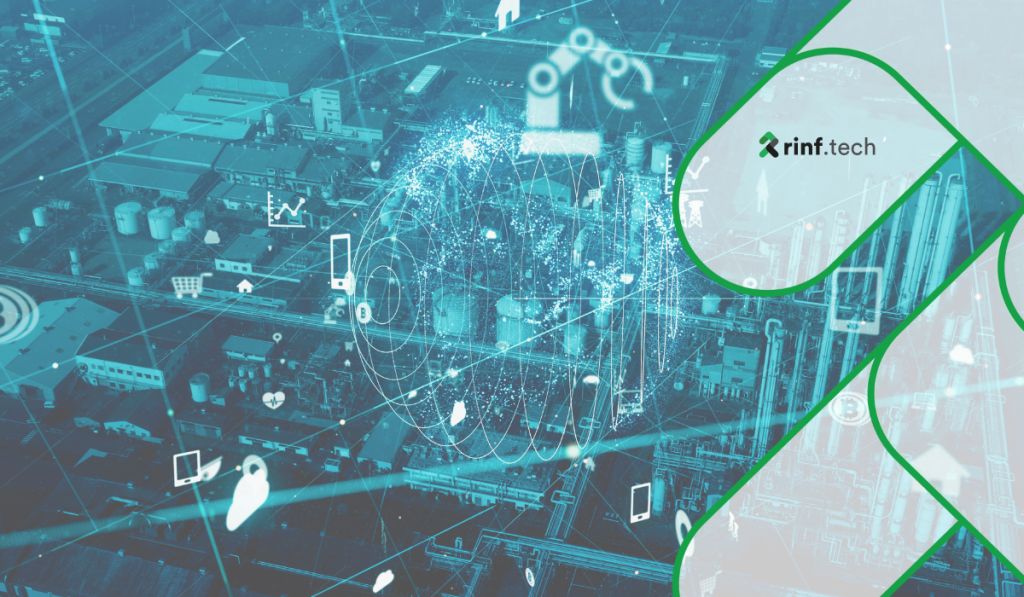
How IoT is Revolutionizing Agriculture: Key Innovations and Future Prospects
Discover how IoT is transforming traditional farming through key innovations, real-world success stories, and future trends that are shaping the agricultural sector.
Embedded software engineering forms the backbone of the wearable industry. Due to the nature of wearables, this embedded software has unique characteristics, a different development process, and a series of exciting tools and technologies for support. Wearables also pose an interesting set of development challenges for designers, engineers, and developers.
The revenue forecast for the wearable technology market shows a colossal figure of $186.14 billion by the year 2030, growing at a compound annual growth rate of 14.3% from 2023. The key drivers include an increased demand for smart devices and a rise in disposable income in previously untapped markets in developing countries.
While North America and a few giant multinational companies dominate this industry, wearables are becoming increasingly widespread. Smaller companies and startups have joined the race to develop wearables. Therefore, knowing what it takes to build embedded software for this exciting and rapidly growing technology is important and relevant.
In this article, we’ll look into the current Embedded Development landscape for wearables, and what it takes to build wearable software, and will delve into tools, challenges, and best practices.
The aesthetic and functional requirements of the parent device dictate the unique features found in embedded wearable software. A key characteristic of this embedded software is a small memory footprint, meaning that a device doesn’t drain a lot of main memory to function. Embedded software for wearables also boasts low power consumption, which is a necessity since small batteries have limitations.
Real-time data processing is a critical element of embedded software for wearables. For example, health monitoring wearables need to ingest and process data in real-time and output information. A fitness tracker needs to track steps or movements immediately. Bodycams need to process, save, or relay videos in real time. There are many such examples of real-time processing, a now-common feature that might have seemed Sci-Fi-esque just a few years ago.
Embedded software needs to feature secure data transmission. This is because hackers can target sensitive data collected by wearable devices. Since wearables connect seamlessly to other smart devices and servers, secure data transmission is critical.
Wearables rely on sensors to gather information. Examples of sensors include accelerometers, humidity, pressure, temperature, piezoelectric, and photo optic sensors. Embedded wearable software must also be compatible with such sensors to be effective.
Successful software development always begins with accurately and effectively collecting the software requirements. These requirements should include the nature of the wearable, primary and secondary capabilities and functions, typical use cases and applications, ideal device lifespan, hardware compatibility requirements, manufacturing details, product pricing, and project budgets.
Once the team gathers all the requirements, they can convert them into technical specifications. Developers will create a software solution and architecture that addresses power requirements, embedded operating systems, interfaces, networks, and backend cloud infrastructure. As such, it’s crucial to identify optimal programming languages and frameworks for the project and include them in the blueprint.
When the blueprint of the system architecture has been approved, it’s time to implement the design and transform specifications into the software. For example, the developers can implement software in microcontrollers. Developers can leverage tools like code editors, linkers, compilers, and debuggers, amongst many others. During this phase, we can also deploy device applications, a cloud-based app infrastructure, and a powerful user interface (UI).
Once the embedded software is up and running on the wearable device, it must undergo extensive testing. Some common types include functional testing, UI testing, regression testing, and connectivity testing. Testing cross-device compatibility, network connectivity, and localization options is also important. If errors or problems arise, a debugging phase must begin to fix and optimize the software.
After glitches have been identified and remediated, the team can deploy embedded software across various devices, platforms, and versions. A software lifecycle doesn’t end after deployment. For example, maintenance is a critical process involving removing redundant features, providing updates, and fixing any errors. We can break down software maintenance into four broad classifications: corrective, adaptive, preventive, and perfective.
Building embedded software for wearables can be a complex task. However, a series of robust and ever-evolving tools and technologies can help developers create unique and powerful embedded software. IDEs (integrated development environments) are applications that programmers use to develop embedded software code. Standard features of IDEs include code completion, refactoring, debugging, syntax highlighting, and language support.
Modular firmware frameworks with libraries of updates, data encryption, and application management options are available for those who don’t want to develop complex code from scratch.
Firmware updates are also essential for wearables. There are many firmware update mechanisms for companies to choose from. However, choosing the most suitable option is important to ensure that their software is up-to-date, safe, and performing efficiently.
Robust emulators and simulators allow developers to test embedded software in safe and flexible environments. Emulators offer a simulation of hardware and software environments to experiment within, whereas simulators are strictly software focused. Numerous powerful debugging tools are also available in the marketplace to help iron out any creases in the embedded software.
Due to the nature and functional requirements of wearable devices, developers need to overcome some tricky development challenges. The first challenge is that innovative and effective software needs to function with limited processing power and memory. This could require some trade-offs to ensure that software can be good while economical with processing power.
Compatibility with different kinds of hardware is another challenge when building embedded software. The software has to be compatible with an increasing number of IoT wearable devices. While on the subject of hardware, power consumption, and low battery life are key issues that need to be acknowledged and navigated.
As mentioned earlier, many wearables use sensors to perform their functions. Therefore, sensor integration and calibration is a significant challenge that needs to be tackled. And last but not least comes the ever-present challenge of security. Security must be at the forefront of all innovations, and wearables are no exception. Providing bulletproof security and powerful privacy options is challenging but essential.
To tackle the challenges mentioned above, it’s important to keep the code as simple as possible when building embedded software for wearables. Code needs to be lightweight and efficient. Secondly, wherever possible, it’s vital to minimize power consumption. Mileage is an important attribute that most successful wearables share.
With wearables, testing and debugging must begin in the earliest stages of software design and continue deep into development and deployment. The same applies to privacy and security. Privacy and security measures need to be prioritized from the first step until consumers adorn wearables. Security threats never stop. Neither should protection measures.
Lastly, user experience must remain at the forefront of any wearable project. Ultimately, what matters is how the end user engages with the embedded software. Therefore, much thought and hard work need to go into providing consumers with world-class user interfaces that are attractive, effective, and easy to use.
A series of emerging trends are making embedded development for wearables more and more popular. Advances in sensor technology, the leveraging of AI, integration with IoT devices, improvements in battery technology, and increased demand for wearable health and fitness monitoring solutions are key drivers of this surge in wearables.
Companies providing wearable development services must have robust processes to create embedded software. They must gather detailed requirements, blueprint the software and app architecture, implement it, test and debug numerous times, deploy, and then constantly surveil and maintain the deployed software.
To successfully build solutions for wearables, it’s important to stay updated on emerging tools and technologies, including IDEs, software libraries and frameworks, debugging tools, emulators, simulators, and firmware update mechanisms.
It’s also vital to be aware of common challenges like limited processing power, battery life, sensor integration, security, and compatibility with diverse hardware. If these challenges can be tackled, there is unlimited potential in the wearables market.
Embedded & IoT
Hardware & Software Integration
AR/MR & Cutting-Edge Tech
Cloud & Virtualization
Robotics
C, C++, Python, Java, SWIG, MQTT, AMQP, SigFox, NB-IoT
.NET, WPF, UWP, ModBus, Angular, Akka, OPC/UA, MQTT
TensorFLow, Caffe, MxNet, Intel tools
Unity, Vuforia, ARCore, ARKit
GoLang, KVM, QEMU, Kubernetes, Fission, KVM, Docker, Firecracker, ELK stack, sysmon, emon, sar, Intel Optane, Intel RDT
Firmware development for core device and connectivity
Mobile applications for data monitoring
C embedded firmware development for ST Microelectronics ARM MCU
Drivers for Bluetooth connection
Drivers for NFC connection
Code optimization for battery lifetime
C++ and JS application development for wearable data collection and monitoring
Manual and automated QA

Discover how IoT is transforming traditional farming through key innovations, real-world success stories, and future trends that are shaping the agricultural sector.

Delving into the IoT device onboarding requirements, challenges and implementation best practices across smart home, industrial, and healthcare settings.

Delving into the complexities of AIoT, exploring its core principles, current state, challenges, and future trends.
Copyright © 2023 rinf.tech. All Rights Reserved.
Terms & Conditions. Cookie Policy. Privacy Policy.
Politica Avertizari de Integritate (RO)